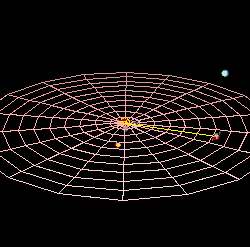Planets/Saturn Lecture/Quiz

The lecture on the Saturn as a planet is part of a series from the Radiation astronomy Department about the effects on spheroidal, astronomical objects by being in orbit about one or more stars, in this case, the Sun, at less than a light year.
You are free to take this quiz based on Saturn as a planet at any time.
To improve your scores, read and study the lecture, the links contained within, listed under See also, External links, and in the {{radiation astronomy resources}} template. This should give you adequate background to get 100 %.
As a "learning by doing" resource, this quiz helps you to assess your knowledge and understanding of the information, and it is a quiz you may take over and over as a learning resource to improve your knowledge, understanding, test-taking skills, and your score.
Suggestion: have the lecture available in a separate window.
To master the information and use only your memory while taking the quiz, try rewriting the information using more familiar points of view, or be creative with association.
Enjoy learning by doing!
Quiz
[edit | edit source]
Hypotheses
[edit | edit source]- Planets are only those substellar astronomical objects in orbit around one or more stars at less than a light year.
See also
[edit | edit source]External links
[edit | edit source]- International Astronomical Union
- NASA's National Space Science Data Center
- The SAO/NASA Astrophysics Data System
